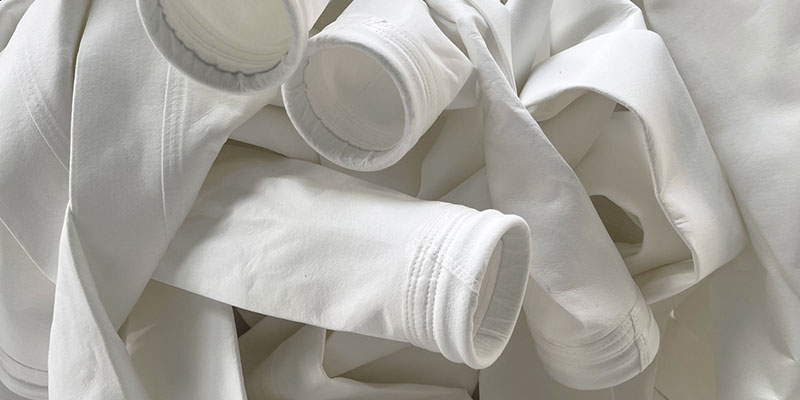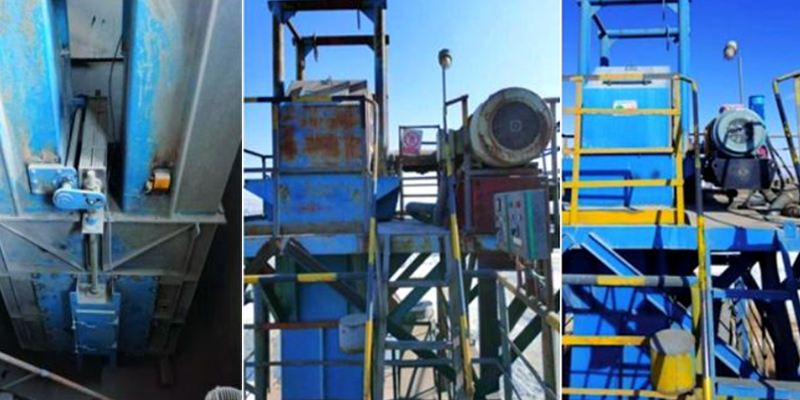You can maintain the performance and lifespan of your bag filter by replacing and handling the filter bags correctly. This guide explains when to change the bag, how to do it, and key points to remember.
Part 1: When to Replace the Filter Bag
Do not replace the filter bag based on a fixed schedule. Instead, you should base the decision on its actual condition. The key indicator is the pressure difference (ΔP) between the inlet and outlet.
-
First, understand the basic principle. The pressure difference across the bag increases when the filter pores clog with contaminants. This higher pressure drop reduces flow rate.
-
Therefore, you must regularly check and record the pressure difference. This practice gives you the most reliable data.
-
Replace the bag when the pressure difference reaches 0.08 – 0.1 MPa. At this point, the bag is partially blocked. We recommend changing the bag here if you need to maintain at least half of the maximum flow rate or require high filtration efficiency (standard bags are about 80-85% efficient).
-
You must replace the bag when the pressure difference reaches 0.2 – 0.25 MPa. The bag is now almost completely blocked. The outlet flow will drop sharply. Also, the high pressure creates a significant risk of the bag breaking. You must stop the system and change the bag immediately.
-
Stop immediately if the pressure difference suddenly drops. A sudden fall to near zero often means the bag is torn. Contaminants are now flowing directly downstream. You must close the valves and stop filtration at once. Then, inspect and replace the damaged bag.
-
Remember, temperature affects these values. The above pressure difference values are for room temperature (~20°C). Filter bag materials (like PP, PE) become weaker at higher temperatures.
-
For example, the bag may only safely handle a pressure difference below 0.1 MPa at 75°C. So, you should set a lower replacement point for high-temperature operations.
Part 2: How to Replace the Filter Bag
Prepare before starting: Get a new filter bag, gloves, clean cloths, and possibly new seal gaskets. You must confirm the system pressure is released and all relevant valves are closed and locked out!
-
Open the Filter Housing
-
Unscrew or lift the filter housing cover. Place it down safely. Be ready for any leftover liquid to drain out.
-
-
Remove the Old Filter Bag
-
Carefully take out the used bag and the trapped solids. Put it directly into a waste bag to avoid mess.
-
-
Clean the Filter Housing (Important)
-
Use a clean cloth to wipe the housing interior and the support basket thoroughly. Make sure the basket holes are not clogged with old fibers or debris. This step protects the new bag and prevents leaks.
-
-
Install the New Filter Bag
-
a. Check the direction. Make sure the smooth side of the bag faces out. The fibrous, woolly side (the filtering layer) should face inward, against the support basket.
-
b. Pre-wet the bag (Important). You must pre-wet bags made from hydrophobic materials like PP or PE. Soak the bag completely in a pre-wetting liquid (compatible with your process liquid or clean water) for a few minutes. This step removes air and ensures the best flow and efficiency.
-
c. Install it correctly. Fully open the pre-wetted bag. Place it carefully into the housing. Ensure it sits fully against the support basket without folds or creases.
-
d. Seal it properly. Check that the metal or plastic seal ring at the top of the bag sits correctly and evenly in the housing’s groove.
-
-
Close and Start the System
-
Put the cover back on. Tighten the bolts evenly as required.
-
Start up slowly. First, partially open the inlet valve. Let the liquid slowly fill the bag and remove any remaining air. Avoid a sudden pressure shock. After the system stabilizes and you confirm there are no leaks, you can fully open the valve for normal operation.
-
Part 3: Filter Bag Selection and Key Points
-
Bag Type and Cleanability
-
Non-Reusable Bags: Needle-felt bags (like PE, PP, PTFE) use a 3D fiber network for depth filtration. Dirt gets trapped deep inside. You must not clean and reuse them because their efficiency becomes very low and they can contaminate your product.
-
Cleanable Bags: Nylon monofilament and stainless steel bags work by surface filtration. Dirt collects on the surface. You can sometimes clean and reuse them, but you must check their performance first.
-
-
Filter Rating Guide
-
Use 20-25 micron bags to remove particles visible to the eye.
-
Use 1-5 micron bags to remove haze or fine suspended solids from liquid.
-
Note: Ratings can vary between manufacturers. Always test for your specific application.
-

Summary: Best Practices
-
Monitoring is key. Always rely on pressure difference data, not guesses.
-
Safety comes first. Always confirm the system is safely isolated and depressurized before any work.
-
Cleaning is essential. A clean filter housing is crucial for a successful bag change.
-
Never skip pre-wetting. Pre-wetting ensures hydrophobic bags work perfectly from the start.




